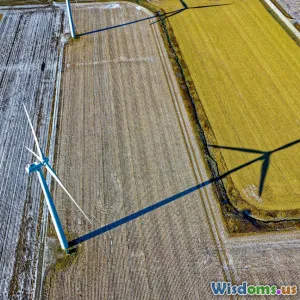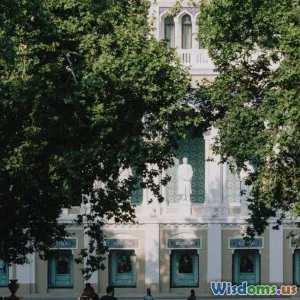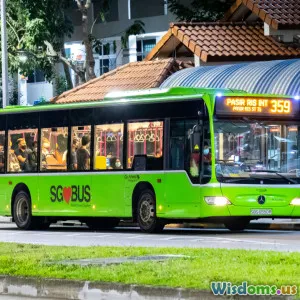
My Year Living in a Green Apartment Block Lessons from Stockholm
8 min read Discover insights from a year living in Stockholm's eco-friendly apartment block and how sustainable urban living can transform home life. (0 Reviews)
My Year Living in a Green Apartment Block: Lessons from Stockholm
Introduction
Imagine stepping out of your apartment onto a balcony edged with verdant plants, breathing air purified by greenery that silently powers your building’s ventilation system. This wasn’t a fleeting vacation vision; it was my daily reality for a full year in one of Stockholm’s pioneering green apartment blocks. Known for its commitment to sustainability and innovative urban planning, Stockholm presents a living laboratory where environmentally conscious design and lifestyle converge seamlessly.
After 12 months immersed in this eco-friendly haven, I’ve gathered invaluable lessons—both practical and philosophical—about how sustainable urban living can transform not just physical spaces but also community connections and personal behaviors. This article peels back the layers of that experience, with detailed insights into Stockholm’s green architecture, energy efficiency techniques, waste management, community dynamics, and what this means for the future of urban residential living worldwide.
The Genesis of Stockholm’s Green Housing Movement
Background
Stockholm's push for green housing didn’t happen overnight. Beginning earnestly in the 1990s, Sweden’s capital embraced environmental policies targeting reduced greenhouse gas emissions tied to buildings. Reflecting a national ethos of environmental stewardship, a blend of legislation, public investment, and innovative design came together, birthing neighborhoods like Norra Djurgårdsstaden, a flagship eco-district.
The Concept of a Green Apartment Block
These blocks integrate energy-efficient technologies, sustainable materials, and community-focused design. Key features include:
- Solar panels generating part of the building’s electricity.
- Geothermal heat pumps expediting efficient heating and cooling.
- Green roofs and walls enhancing insulation and biodiversity.
- Systems incentivizing waste reduction and recycling.
Living in this environment means more than reduced carbon footprints; it means actively participating in an eco-conscious lifestyle embedded within daily routines.
Architecture and Energy Efficiency: The Core of Green Living
Principle of Passive Design
The apartment block I lived in was optimized for passive solar gain with large south-facing windows, triple glazing for minimal heat loss, and strategically placed ventilations that heat or cool without excessive energy usage.
According to the Swedish Environmental Research Institute, such passive design choices can reduce overall energy consumption by up to 50% compared to conventional buildings—a statistic evident in my energy bills, which consistently remained below average despite harsh Swedish winters.
Renewable Energy Sources
Stockholm’s green blocks often leverage solar panels combined with district heating networks—locally sourced energy solutions that drastically reduce reliance on fossil fuels. My building’s rooftop solar array supplied roughly 20% of its electricity needs. Greatly augmented by Sweden’s clean hydropower, this synergy underscores how green infrastructure benefits from regional resource integration.
Waste Management Innovations
In-Home Sorting Systems
A defining feature was the ease of sorting recyclables: specialized waste chutes separated organic, plastic, metal, and general waste. Notably, organic waste collection fed into a community biogas plant providing fuel for local buses—a closed-loop system demonstrating circular economy principles in action.
Data on Impact
Data from the building management showed a 40% decrease in landfill-bound waste within the first six months. For residents, this translated into an elevated awareness about consumption habits—a powerful behavioral shift facilitated by infrastructure design.
Community Dynamics in a Sustainable Environment
Shared Spaces as Social Catalysts
Green apartment blocks go beyond individual sustainability; they foster community engagement with shared gardens, rooftop terraces, and common areas designed for collective use. During summer, community-organized gardening and compost workshops transformed neighbors from strangers into collaborators.
Residents' Perspectives
A survey conducted within the complex revealed that 85% of residents felt that their living environment strengthened social connections—an often underappreciated aspect of sustainable housing that enhances mental well-being.
Challenges Encountered and Overcome
Maintaining Green Infrastructure
Despite best designs, green roofs required regular maintenance to prevent plant dieback and waterproofing issues—a reminder that sustainability includes ongoing stewardship. The homeowners’ association arranged seasonal workshops with experts, empowering residents to contribute to care routines.
Balancing Cost and Accessibility
Green buildings can carry higher upfront costs. However, subsidies from government programs, such as the Swedish Energy Agency’s grants, eased affordability. Long-term savings through energy efficiency further justified the investment.
Broader Implications for Global Urban Living
Replicability
While Stockholm benefits from Sweden’s cold climate and supportive policies, fundamental principles of green living can be adapted globally. Cities like Vancouver and Amsterdam mirror similar initiatives, illustrating universal applicability.
Policy Recommendations
Policymakers should prioritize integrating renewable energy systems, incentivize green construction materials, and promote community-oriented living spaces. Stockholm’s experience provides a successful blueprint.
Cultural Shift
Sustainable urban living demands embracing lifestyle changes—reducing consumption, active participation in shared resources, and valuing connection to local ecosystems.
Conclusion
My year in Stockholm’s green apartment block was more than a residency; it was an immersive education in sustainable living that challenged and reshaped my lifestyle and worldview. From cutting energy consumption by half to discovering the joy of communal gardening and learning the nuanced care green infrastructure demands, every aspect was a lesson in harmony between human habitation and nature.
This experience reinforces a compelling vision: that future urban homes need not sacrifice comfort or convenience in pursuit of sustainability. Instead, through thoughtful design, technology, and community engagement, they can become thriving ecosystems—both environmentally and socially.
By sharing these lessons, I hope to inspire readers worldwide to advocate for greener urban living, take action in their communities, and embrace a sustainable lifestyle that benefits individuals and the planet forever.
“Sustainability isn’t just a goal; it’s a daily practice shaped by where and how we live.” – Stockholm Green Housing Resident
References
- Swedish Environmental Research Institute, Energy Use in Buildings, 2022.
- Norra Djurgårdsstaden official website: https://www.norradjurgardsstaden.se
- Swedish Energy Agency, Grants Overview, 2023.
- Community Survey Report, Stockholm Green Apartment Complex, 2023.
- European Federation of Green City Initiatives, 2022.
Rate the Post
User Reviews
Popular Posts




















